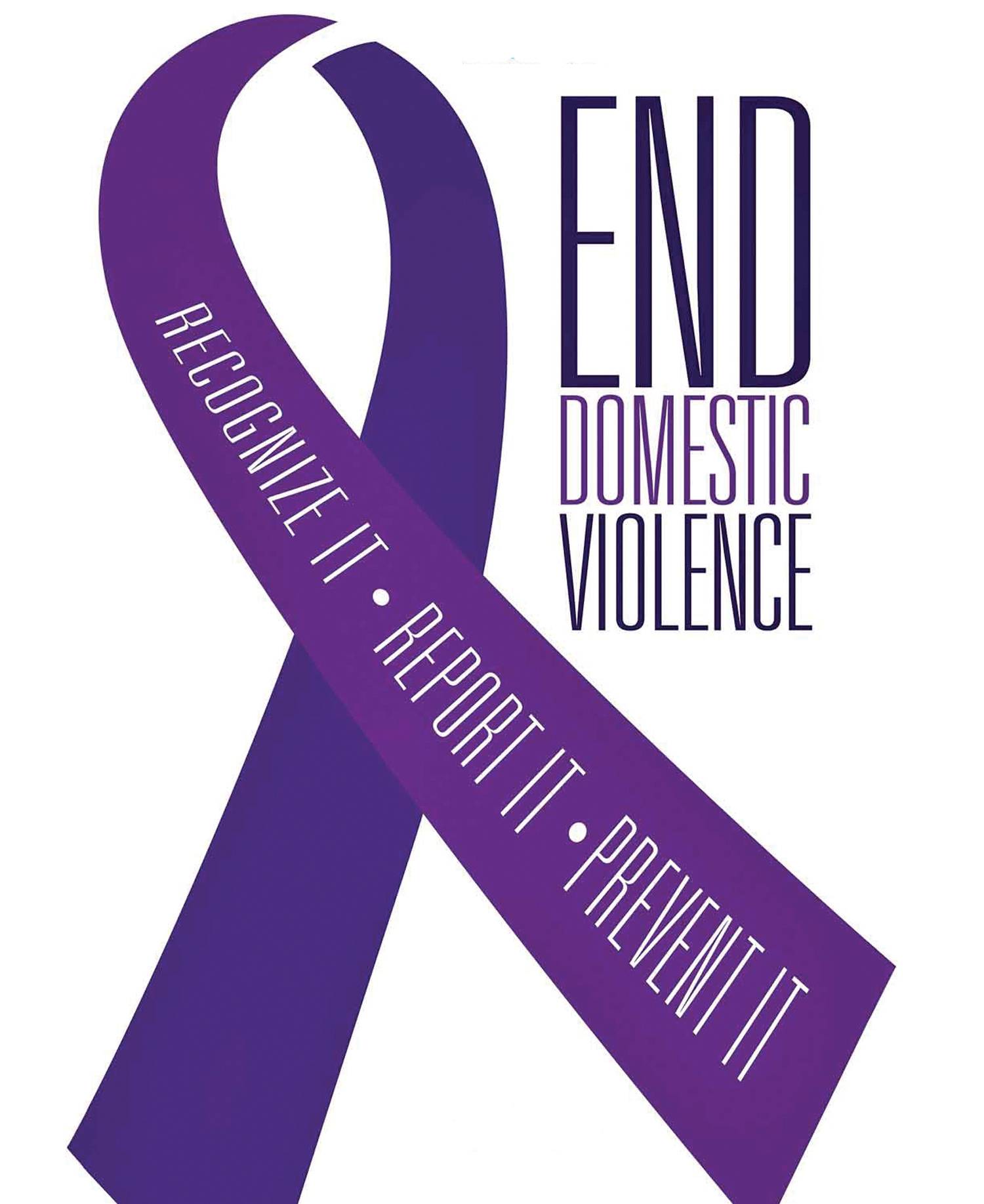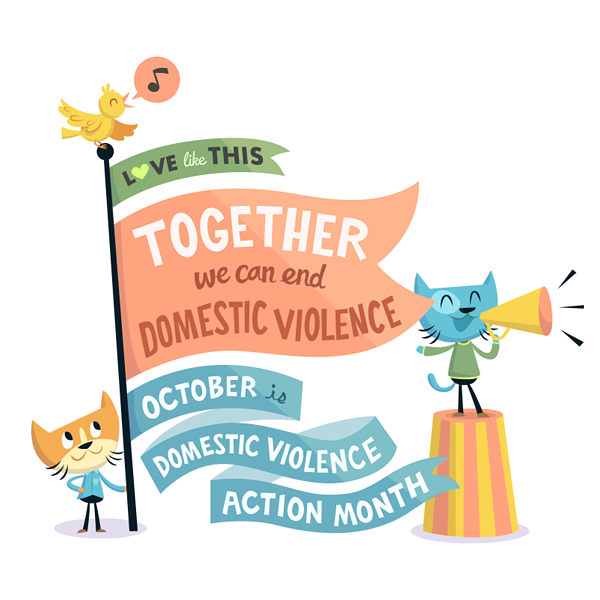October is…
Domestic Violence Awareness/Action Month
October is DVAM-domestic violence awareness month. DVAM originally began as a single day of awareness in 1981 as a way to connect people who were working to end DV. The day stretched into a week. In 1987, the first Domestic Violence Awareness Month was observed and the first national domestic violence toll-free hotline opened. In 1989, the U.S. Congress designated October as National Domestic Violence Awareness Month.
This month, the Domestic Violence Awareness Project (DVAP)’s message #31n31, 31 Moments that Make a Movement. The National Network to End Domestic Violence is sharing moments that have built a movement to end domestic violence.
Domestic violence is not a monolith– it does not look the same in every occurrence, in every family. Pop culture usually shows domestic violence as being hit or slapped; domestic abuse includes emotional, sexual, financial, and technological abuse. Domestic violence does not have a face- it can happen to anyone of any race, socioeconomic class, gender, sexual orientation, religion, ability, etc.
Some Domestic Violence Statistics:

Some people think that domestic violence only affects two people: the victim and the perpetrator- however, DV affects every single person in a family. Children who witness abuse are more likely to experience depression and substance abuse, more likely to be assaulted, and more likely to perpetuate violence and abuse. Statistics from The Hotline.
- On average, 24 people per minute are victims of rape, physical violence or stalking by an intimate partner in the United States — more than 12 million women and men over the course of a year.
- A child witnessed violence in 22% (nearly 1 in 4) of intimate partner violence cases filed in state courts and 30 to 60% of perpetrators of intimate partner violence also abuse children in the household.
- One study in North America found that children who were exposed to violence in the home were 15 times more likely to be physically and/or sexually assaulted than the national average.
- About 1 in 5 women and nearly 1 in 7 men who ever experienced rape, physical violence, and/or stalking by an intimate partner, first experienced some form of partner violence between 11 and 17 years of age.
- One in 10 high school students has experienced physical violence from a dating partner in the past year.
- Most female and male victims of rape, physical violence, and/or stalking by an intimate partner (69% of female victims, 53% of male victims) experienced some form of intimate partner violence for the first time before 25 years of age.

Subtle Signs of Abuse:
Abuse is not always physical. Abuse is about power and control, which can be gained through emotional manipulation as well as physical violence. Abuse can be insidious and might include some of these common tactics (from Refinery29):
- Demanding to always know where you are, non-stop texting or calling
- Isolating you from other family, friends
- Accusing, blaming, shaming, calling you a failure
- Threatening physical harm with or without a weapon
- Neglect
- Harming a pet
- Breaking personal belongings
- Gaslighting (a form of emotional abuse that affects a person’s sense of reality)
- Parents using children to relay hurtful messages to one another
What to do if you suspect you are living in an abusive home:
Acknowledging abuse can be difficult, because growing up in an abusive household means you might see the abuse as normal. Someone in an abusive household may think that this is “just how its done” or may blame her/himself for not ‘being good enough’ to stop a parent or sibling from being abusive. Someone in one of these homes may mistakenly think that name-calling, hitting, shaming, etc. are normal ways to treat others. 
- If you think that you or a friend may be in an abusive home, know that it is not your fault, abuse is not normal, and get help.
- Talk to a trusted adult for help and guidance.
- Call the Childhelp USA Helpline: (800) 4-A-CHILD ([800] 422-4453).
- If necessary, stay with a friend or family member.
- Through counseling, learn to recognize patterns of abuse. Sometimes people in abusive homes can unknowingly abuse others without meaning to, because they do not recognize behaviors as abusive.
- KidsHelp.org has more information and info about living in an abusive home.

#1Thing You Can do to End Violence:
- Don’t make fun of, bully or try to control others.
- When you are angry, try not to hurt or humiliate the person you are upset with.
- Call out jokes about partner violence, rape, etc. Contact your favorite TV shows and brands when they make offensive jokes about abuse.
- Believe survivors and encourage your friends and family to do the same.
- Encourage your teachers and community leaders to learn and educate others about the effects of abuse and violence.
- If you think you could be the abusive friend or partner, contact a trusted adult and get help.
- Examine your actions and words and try your best to live a violence-free life.
- Keep a resource list handy for yourself and your friends:
The Domestic Abuse Hotline: 1−800−799−7233 or text START to 88788
National Dating Abuse Helpline at 1-866-331-9474,
Online chat: http://www.loveisrespect.org/get-help/get-help | Text: “loveis” to 77054
Crisis Text line: Text CONNECT to 741741 in the US or 686868 in Canada.
RAINN Sexual Assault Hotline: 1-800-656-4673
All of these services are free, confidential, and available any time.
Remember, if you or someone you know is living in an abusive and/or violent household, it is not your fault. You are not alone, there is help available to you. You deserve to live a life free of violence and abuse.
Related Reading
Freedom from Abusive Restraints by SK
A Seven Year Nightmare : The Journey of Finding and Freeing Myself by Riv Lobban
Not Alone/No Estas Solx: The Monument Quilt
All the Women in My Family Sing: Interview with Deborah Santana

2 thoughts on “Domestic Violence Awareness & Action Month”